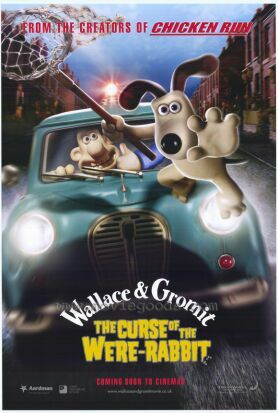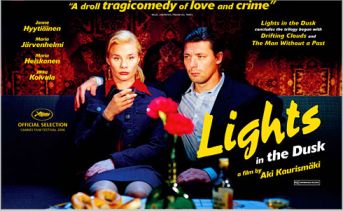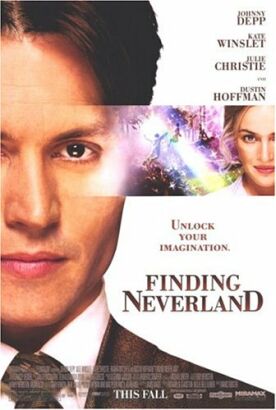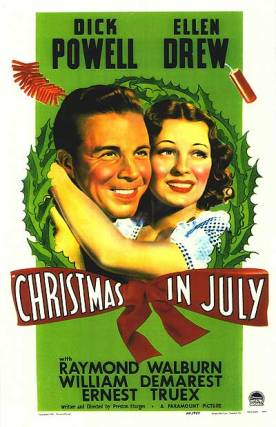Antichrist
You only have to hear the plot summary of Lars von Trier’s Antichrist to hate it. It begins with scenes of a couple (Charlotte Gainsbourg and Willem Dafoe) enjoying carnal relations in pornographic detail as the haunting Handel aria, “Lascia ch’io pianga” (“Let me weep”) from Rinaldo, plays on the soundtrack. Intercut with these scenes are others of a toddler, clutching a stuffed animal, as he makes his purposeful way to an upper-storey window out of which he falls to his death, seemingly at the same moment that Miss Gainsbourg, known only as “She” and presumably the child’s mother, experiences a shuddering orgasm. Naturally, the couple are both grief- and guilt-stricken, and they retreat to a cabin called “Eden” in the remote forests of (ostensibly) Washington state where their attempts at a therapeutic resolution of their conflicted feelings — the husband, known only as “He” is a therapist who undertakes to treat his own wife — soon gives way to torture and murder of a particularly graphic and revolting kind.
Nature, described by “She” as “Satan’s church” appears to look on approvingly. In particular, a not-so fantastic Mr Fox is made to say, or bark, “Chaos reigns” to the camera in a scene that has been widely mocked by the critical fraternity and hooted at by audiences at Cannes. They as well as a host of other viewers-with-alarm who have publicly deplored the film’s pornography, both the regular kind and the violence porn, have probably been responsible for making Antichrist into the succ s de scandale that must have been Mr von Trier’s aim, but that does not mean they are not right in finding much to hate about it, including the fact that, like several others among Mr von Trier’s oeuvre, it appears to have an unhealthy if not pathological interest in detailed images of women being tortured and killed.
Yet it is not quite true that the picture has no redeeming features. Breaking the Waves, Dancer in the Dark, Dogville, Dear Wendy — all these I thought were almost if not completely worthless: vile, anti-American, politically tendentious trash that seemed to me false in nearly every detail. There was in each of them, probably, a degree of working out of their author’s own psycho-sexual “hangups” (as some of us used to call them back in the 1960s), but they had nothing to say of the world outside his dark imagination. That is not quite true of Antichrist, although in the end there is so much that is wrong with the movie that it overwhelms the little that is right — or at least worth considering.
That part, in my view, lies in its unique seriousness of its inquiry into the origins of male misogyny. “She” makes frequent reference to a sort of scrapbook labeled “Gynocide,” which may or may not be the “thesis” that “He” was once supposed to have thought “glib.” He seems to be her academic adviser as well as her husband and therapist. In the book there are accounts of the usual sorts of things — witch-burnings and whatnot — that feminists have historically identified as the characteristic crimes of the so-called Patriarchy. But “She” appears not to approach them in a feminist spirit so much as one of emulation. Like the superstitious peasants of centuries past, she acts as if she believes in witches, and she seems at times — though not without hesitation and ambiguity — to aspire to be a witch herself.
The idea, I think, is that she has embraced the misogynistic caricature of women as her own assumed identity in order to call down upon her head the capital punishment once meted out to witches. Most of her witchery consists of the tortures she devises for her husband and herself — the latter including an auto-clitoridectomy — even though these are naturalistically (and disgustingly) rather than supernaturally applied. But there are also hints of the occult in addition to the numerous religious allusions which, like the film’s title, are designed to create a portentously cosmic stage-set for its harrowing images. At one point, after mentioning two German sisters of the middle ages who were supposed to have had the power to cause hailstorms, “She” concentrates very hard and appears to cause a hailstorm herself. So, are we to suppose that Mr von Trier believes in witches too?
Probably not. But he may well believe as “She” does, or says she does, that there is no reason to suppose that women are exempted from the “evil” in human nature, and that if evil things have been done to and are still being done to them, these things are quite likely to be related to evil things they have done. It’s a stunningly politically incorrect idea, and Mr von Trier doesn’t quite have the courage to do more than suggest it and then draw back for yet another scene of innocent — or even not-so-innocent — femininity being vilely treated by a man. That the man in this case has been tortured by her in the first instance means that the scene lacks some of the moral weight it might otherwise have had in this equation on account of the lurid and cinematic nature of the tortures, and the fact that they are answered by a particularly revolting act of torture committed against herself.
“I make my movies to provoke myself. I take a subject and a point of view that I do not share, and then I defend that,” said Mr von Trier in an interview, which is a helpful attitude to have when you are acting, as he is in Antichrist, as the devil’s advocate. The trouble is that we’re never quite sure if the devil whose case he is arguing is the actual principle of evil in the universe — always assuming there is such a thing — or merely some painted pantomime devil dragged in from the literature of political correctness. Worse, he’s not sure himself. This is a “what if” movie. The author appears to be asking himself “what if” there really were a devil, and therefore a God, on whom suffering could be blamed? But Mr von Trier can’t quite suspend his disbelief for long enough to act as if there were.
Discover more from James Bowman
Subscribe to get the latest posts to your email.






